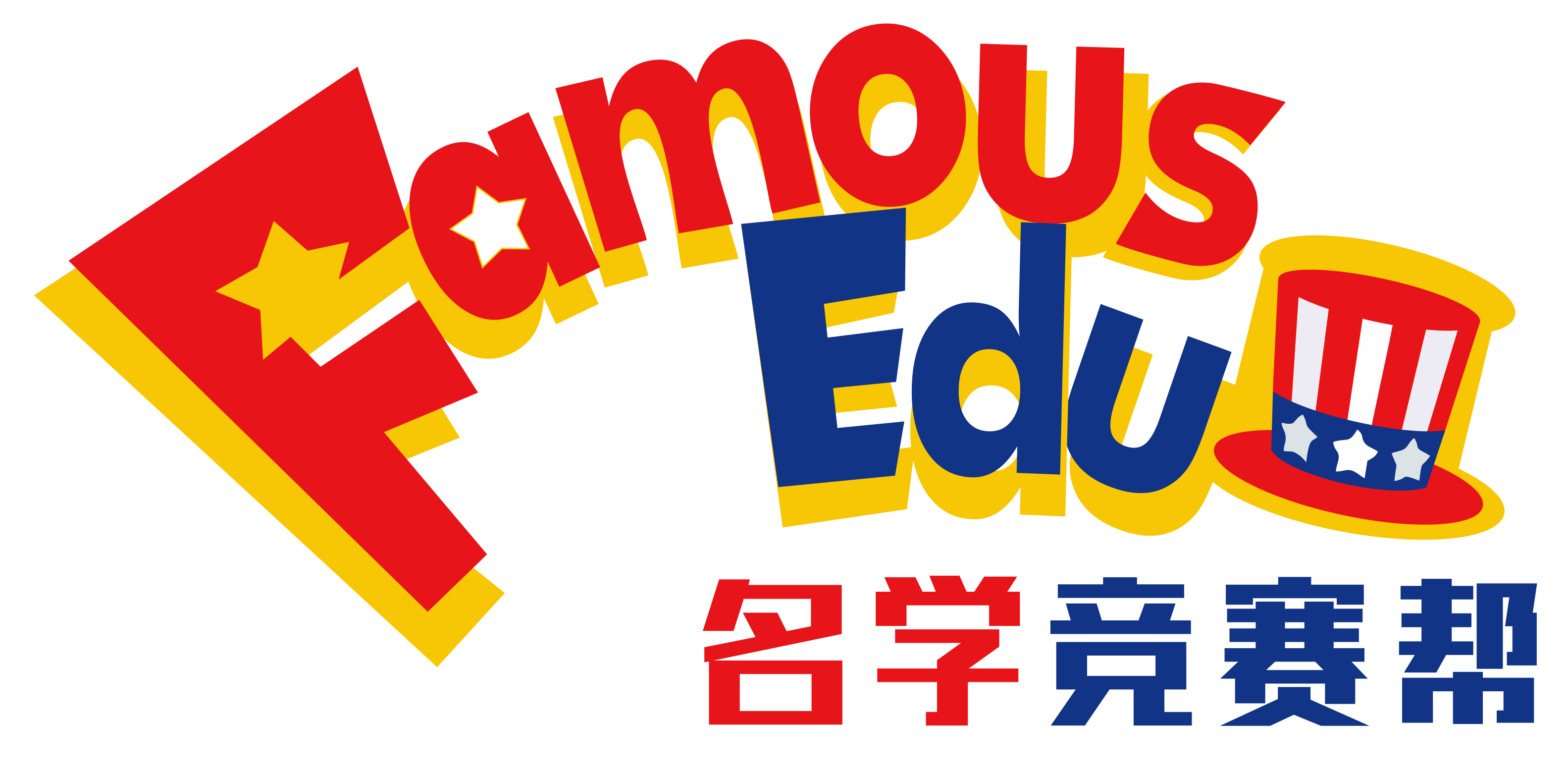AMC8 2013年真题
2013 AMC 8 Problems
Problem 1
Danica wants to arrange her model cars in rows with exactly 6 cars in each row. She now has 23 model cars. What is the smallest number of additional cars she must buy in order to be able to arrange all her cars this way?
(A) 1 (B) 2 (C) 3 (D) 4 (E) 5
Problem 2
A sign at the fish market says, "50% off, today only: half-pound packages for just $3 per package." What is the regular price for a full pound of fish, in dollars? (Assume that there are no deals for bulk)
(A) 6 (B) 9 (C) 10 (D) 12 (E) 15
Problem 3
What is the value of 4 · (-1 + 2 - 3 + 4 - 5 + 6 - 7 + ... + 1000) ?
(A) -10 (B) 0 (C) 1 (D) 500 (E) 2000
Problem 4
Eight friends ate at a restaurant and agreed to share the bill equally. Because Judi forgot her money, each of her seven friends paid an extra $2.50 to cover her portion of the total bill. What was the total bill?
![]()
Problem 5
Hammie is in the 6th grade and weighs 106 pounds. Her quadruplet sisters are tiny babies and weigh 5, 5, 6, and 8 pounds. Which is greater, the average (mean) weight of these five children or the median weight, and by how many pounds?
(A) median, by 60 (B) median, by 20 (C) average, by 5
(D) average, by 15 (E) average, by 20
Problem 6
The number in each box below is the product of the numbers in the two boxes that touch it in the row above. For example, 30 = 6 x 5. What is the missing number in the top row?
![[asy] unitsize(0.8cm); draw((-1,0)--(1,0)--(1,-2)--(-1,-2)--cycle); draw((-2,0)--(0,0)--(0,2)--(-2,2)--cycle); draw((0,0)--(2,0)--(2,2)--(0,2)--cycle); draw((-3,2)--(-1,2)--(-1,4)--(-3,4)--cycle); draw((-1,2)--(1,2)--(1,4)--(-1,4)--cycle); draw((1,2)--(1,4)--(3,4)--(3,2)--cycle); label("600",(0,-1)); label("30",(-1,1)); label("6",(-2,3)); label("5",(0,3)); [/asy]](http://nwzimg.wezhan.cn/contents/sitefiles2050/10251729/images/43994557.png?)
![]()
Problem 7
Trey and his mom stopped at a railroad crossing to let a train pass. As the train began to pass, Trey counted 6 cars in the first 10 seconds. It took the train 2 minutes and 45 seconds to clear the crossing at a constant speed. Which of the following was the most likely number of cars in the train?
(A) 60 (B) 80 (C) 100 (D) 120 (E) 140
Problem 8
A fair coin is tossed 3 times. What is the probability of at least two consecutive heads?
![]()
Problem 9
The Incredible Hulk can double the distance it jumps with each succeeding jump. If its first jump is 1 meter, the second jump is 2 meters, the third jump is 4 meters, and so on, then on which jump will it first be able to jump more than 1 kilometer?
(A) 9th (B) 10th (C) 11th (D) 12th (E) 13th
Problem 10
What is the ratio of the least common multiple of 180 and 594 to the greatest common factor of 180 and 594?
(A) 110 (B) 165 (C) 330 (D) 625 (E) 660
Problem 11
Ted's grandfather used his treadmill on 3 days this week. He went 2 miles each day. On Monday he jogged at a speed of 5 miles per hour. He walked at the rate of 3 miles per hour on Wednesday and at 4 miles per hour on Friday. If Grandfather had always walked at 4 miles per hour, he would have spent less time on the treadmill. How many minutes less?
(A) 1 (B) 2 (C) 3 (D) 4 (E) 5
Problem 12
At the 2013 Winnebago County Fair a vendor is offering a "fair special" on sandals. If you buy one pair of sandals at the regular price of $50, you get a second pair at a 40% discount, and a third pair at half the regular price. Javier took advantage of the "fair special" to buy three pairs of sandals. What percentage of the $150 regular price did he save?
(A) 25% (B) 30% (C) 33% (D) 40% (E) 45%
Problem 13
When Clara totaled her scores, she inadvertently reversed the units digit and the tens digit of one score. By which of the following might her incorrect sum have differed from the correct one?
![]()
Problem 14
Abe holds 1 green and 1 red jelly bean in his hand. Bob holds 1 green, 1 yellow, and 2 red jelly beans in his hand. Each randomly picks a jelly bean to show the other. What is the probability that the colors match?

Problem 15
If 3p + 34 = 90, 2r + 44 = 76, and 53 + 6S = 1421, what is the product of p, r, and S?
(A) 16 (B) 40 (C) 55 (D) 79 (E) 89
The sum of six consecutive positive integers is 2013. What is the largest of these six integers?
(A) Hannah, Cassie, Bridget (B) Hannah, Bridget, Cassie
(C) Cassie, Bridget, Hannah (D) Cassie, Hannah, Bridget
(A) 7 (B) 7.5 (C) 8 (D) 8.5 (E) 9

![[asy] import three; size(3inch); currentprojection=orthographic(-8,15,15); triple A,B,C,D,E,F,G,H,I,J,K,L,M,N,O,P; A = (0,0,0); B = (0,10,0); C = (12,10,0); D = (12,0,0); E = (0,0,5); F = (0,10,5); G = (12,10,5); H = (12,0,5); I = (1,1,1); J = (1,9,1); K = (11,9,1); L = (11,1,1); M = (1,1,5); N = (1,9,5); O = (11,9,5); P = (11,1,5); //outside box far draw(surface(A--B--C--D--cycle),white,nolight); draw(A--B--C--D--cycle); draw(surface(E--A--D--H--cycle),white,nolight); draw(E--A--D--H--cycle); draw(surface(D--C--G--H--cycle),white,nolight); draw(D--C--G--H--cycle); //inside box far draw(surface(I--J--K--L--cycle),white,nolight); draw(I--J--K--L--cycle); draw(surface(I--L--P--M--cycle),white,nolight); draw(I--L--P--M--cycle); draw(surface(L--K--O--P--cycle),white,nolight); draw(L--K--O--P--cycle); //inside box near draw(surface(I--J--N--M--cycle),white,nolight); draw(I--J--N--M--cycle); draw(surface(J--K--O--N--cycle),white,nolight); draw(J--K--O--N--cycle); //outside box near draw(surface(A--B--F--E--cycle),white,nolight); draw(A--B--F--E--cycle); draw(surface(B--C--G--F--cycle),white,nolight); draw(B--C--G--F--cycle); //top draw(surface(E--H--P--M--cycle),white,nolight); draw(surface(E--M--N--F--cycle),white,nolight); draw(surface(F--N--O--G--cycle),white,nolight); draw(surface(O--G--H--P--cycle),white,nolight); draw(M--N--O--P--cycle); draw(E--F--G--H--cycle); label("10",(A--B),SE); label("12",(C--B),SW); label("5",(F--B),W);[/asy]](http://nwzimg.wezhan.cn/contents/sitefiles2050/10251729/images/43994567.png?)

![[asy] picture corner; draw(corner,(5,0)--(35,0)); draw(corner,(0,-5)--(0,-35)); for (int i=0; i<3; ++i) { for (int j=0; j>-2; --j) { if ((i-j)<3) { add(corner,(50i,50j)); } } } draw((5,-100)--(45,-100)); draw((155,0)--(185,0),dotted); draw((105,-50)--(135,-50),dotted); draw((100,-55)--(100,-85),dotted); draw((55,-100)--(85,-100),dotted); draw((50,-105)--(50,-135),dotted); draw((0,-105)--(0,-135),dotted); [/asy]](http://nwzimg.wezhan.cn/contents/sitefiles2050/10251729/images/43994550.png?)
![[asy] import graph; pair A,B,C; A=(0,8); B=(0,0); C=(15,0); draw((0,8)..(-4,4)..(0,0)--(0,8)); draw((0,0)..(7.5,-7.5)..(15,0)--(0,0)); real theta = aTan(8/15); draw(arc((15/2,4),17/2,-theta,180-theta)); draw((0,8)--(15,0)); dot(A); dot(B); dot(C); label("$A$", A, NW); label("$B$", B, SW); label("$C$", C, SE);[/asy]](http://nwzimg.wezhan.cn/contents/sitefiles2050/10251729/images/43994555.png?)
![[asy] pair A,B,C,D,E,F,G,H,I,J; A = (0.5,2); B = (1.5,2); C = (1.5,1); D = (0.5,1); E = (0,1); F = (0,0); G = (1,0); H = (1,1); I = (2,1); J = (2,0); draw(A--B); draw(C--B); draw(D--A); draw(F--E); draw(I--J); draw(J--F); draw(G--H); draw(A--J); filldraw(A--B--C--I--J--cycle,grey); draw(E--I); label("$A$", A, NW); label("$B$", B, NE); label("$C$", C, NE); label("$D$", D, NW); label("$E$", E, NW); label("$F$", F, SW); label("$G$", G, S); label("$H$", H, N); label("$I$", I, NE); label("$J$", J, SE); [/asy]](http://nwzimg.wezhan.cn/contents/sitefiles2050/10251729/images/43994556.png?)

![[asy] pair A,B; size(8cm); A=(0,0); B=(480,0); draw((0,0)--(480,0),linetype("3 4")); filldraw(circle((8,0),8),black); draw((0,0)..(100,-100)..(200,0)); draw((200,0)..(260,60)..(320,0)); draw((320,0)..(400,-80)..(480,0)); draw((100,0)--(150,-50sqrt(3)),Arrow(size=4)); draw((260,0)--(290,30sqrt(3)),Arrow(size=4)); draw((400,0)--(440,-40sqrt(3)),Arrow(size=4)); label("$A$", A, SW); label("$B$", B, SE); label("$R_1$", (100,-40), W); label("$R_2$", (260,40), SW); label("$R_3$", (400,-40), W);[/asy]](http://nwzimg.wezhan.cn/contents/sitefiles2050/10251729/images/43994559.png?)




